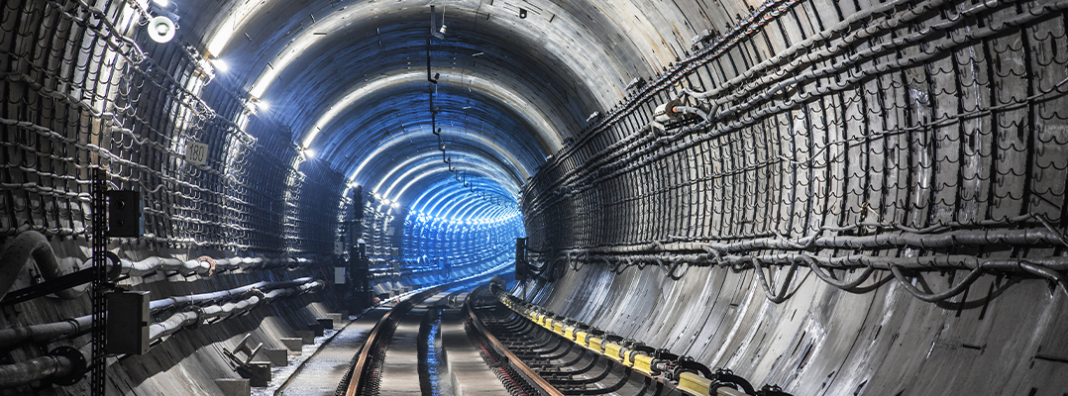
A couple years ago, the federal government’s 10-year real interest rate went firmly negative. Wonk twitter went wild. This was the perfect time, many of the wonks said, to invest in big infrastructure projects.
In theory, they had a point. When interest rates are low, borrowing and investing in durable projects is cheaper than when interest rates are high, holding other things equal. It’s easy to take this point too far, as some wonks did, claiming that negative real interest rates were essentially free money and that it didn’t matter what we did with the funds. Yet, “when it’s cheaper to borrow, that’s good for borrowing” is a solid point.
In practice, however, interest rates matter a lot less than state capacity, the ability of a government to effectively accomplish its policy goals. When bad policies and poor governance make projects expensive to complete, then the cheaper cost of money due to low interest rates is swamped by the sheer magnitude of a project’s costs. Good governance matters more than interest rates.
Alon Levy has been following transit construction costs on the blog Pedestrian Observations for over a decade and has supplied numerous examples of poor state capacity in the US. As Levy has shown, these construction costs can easily vary by over a factor of 10.
The new tunnels for New York’s East Side Access project cost about $4 billion per kilometer, while Paris built a similar project (infill development, went under the Seine, had problems with catacombs) for $230 million per kilometer. Copenhagen, Barcelona, Naples, and Milan were all cheaper still, while South Korea was generally the cheapest, with a tunneling cost around $100 million per kilometer, or perhaps less. That’s quite a difference in state capacity.
Maybe there’s something special about tunneling? In 2019, Levy looked at the construction cost to add elevators to make transit stations more accessible. In New York, the cost per station of adding elevators works out to $39 million. In Boston, it’s $25 million. Meanwhile, high-state-capacity Berlin brought complete step-free access to all its stations for a cost of $2.6 million per station.
Most recently, Amtrak wants to use billions in infrastructure bill funds to redevelop Penn Station and add unneeded tracks. Levy says these projects have “no benefit whatsoever” and are tantamount to setting tens of billions of dollars on fire, a sure sign of low state capacity. In Europe, I’m sure, they can produce no benefits for a much lower cost.
Now for a numerical example.
Let’s compare a low interest rate, low state capacity version of the world with a high interest rate, high state capacity one. For the first scenario, we’ll assume a -1% real interest rate and $12 billion project cost. For the second scenario, we’ll assume a 5% real interest rate and $1.2 billion project cost.
Government bonds provide flexible financing, so unlike a 30-year mortgage, there isn’t a fixed payment schedule. Let’s assume for our example that the government pays only nominal interest for 30 years, and then pays the full nominal principle back at the end of 30 years. Running the numbers using other payment schedules is an exercise left to the reader.
I’ve put a summary of the payments in each case in the table below. In the low interest rate, low state capacity scenario (let’s call it “LOW”), the semi-annual nominal coupon payment is $60 million, while in the opposite scenario (“HIGH”), it’s $42 million.
In LOW, the inflation-adjusted value of the 60 coupon payments made over the 30-year period is about $2.7 billion, whereas in HIGH, it is about $1.9 billion.
When it’s time to pay back principal, inflation has eroded the initial project cost in both scenarios by 45%. In LOW the principal that must be paid back still works out to 10 times as much as in HIGH.
All told, total inflation-adjusted payments in LOW amount to $9.2 billion, while in HIGH they amount to $2.5 billion. Six percentage points of interest rate favorability reduce the cost multiple between the projects from 10x to 3.64x, but they can’t fully overcome low state capacity.
Do these numbers mean that we shouldn’t invest in infrastructure even when interest rates are low?
Of course not. They instead imply that high state capacity matters most. It doesn’t make sense to get excited about a 1- or 2-point interest rate swing when our initial costs are so out of control.
The argument cuts the other way as well. Ezra Klein has written longingly about “a liberalism that builds.” My expectation is that if the growing movement to create higher state capacity in the United States succeeds, interest rates will tend to be higher.
With faster and more effective institutions and, say, reasonable permitting times, many more investment opportunities will present themselves in the private sector. New, ambitious projects will become more enticing. The high returns in the private sector will create capital scarcity and tend to drive interest rates up.
Would it be right to argue then that interest rates are too high to support a government-funded infrastructure cost?
Of course not. If we succeed in increasing state capacity, decreasing government construction costs as well as unnecessary burdens on private sector builders, we will have won the majority of the fight for the ability to build.
Interest rates are not the most relevant factor. Even if rates are higher than before, infrastructure investment is now more likely to be worthwhile, subject as always to the costs and benefits of each specific project.
If you want gleaming, modern infrastructure worthy of the richest country on the planet, don’t focus on interest rates. Work to build state capacity.


 New York Daily News
New York Daily News